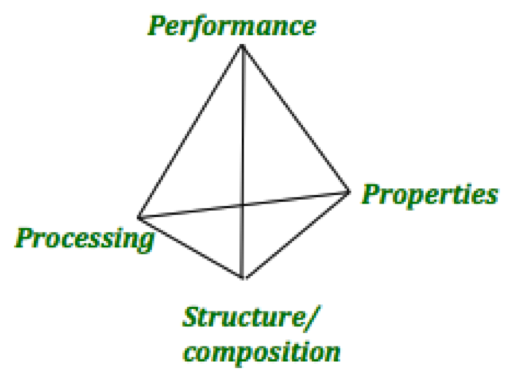Teaching
The academic discipline of Materials Science and Engineering (MSE) uniquely entails the use of applied science and engineering principles and concepts to develop a microstructure-founded understanding of the complex interrelationships between the processing, structure, properties and performance of materials, whether naturally occurring or engineered. Processing of materials includes their synthesis, fabrication or preparation. Structure includes not just their macroscopic appearance, visible with the unaided eye, but also the material's elemental composition and chemistry (e.g. bonding between atoms or molecular building blocks) and the material internal constitution or microstructure. Microstructural features range in length scale from the atomic to fractions of millimeters. The processing changes or affects structure, which in turn determine the properties (e.g. mechanical, electromagnetic, chemically…) of a material. The combination of properties then relate to the performance (e.g. how long it takes to corrode or break under cyclic loading) of the material in a given component or application. The major tenets of the MSE discipline and field of research activity are often described using a graphic illustration of these interrelationships in the form of a tetrahedron, the ‘Materials Paradigm’ pictured to the right. The four interrelated materials topics at the vertices are interrelated along the edges of the Materials-Tetrahedron. Dr. Wiezorek’s formal teaching efforts contribute to core-classes of the MSE curricula of the undergraduate and graduate degree programs. He has been responsible for teaching several different courses on topics of physical metallurgy and materials characterization, including microstructure evolution, phase transformations, plastic deformation, crystal defects and dislocations, crystallography, diffraction, electron microscopy and nano-characterization of materials. Recent classes and example syllabi are collated below:
